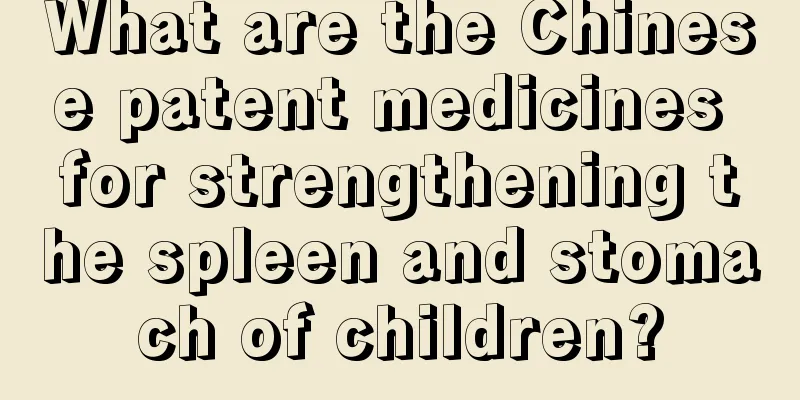Treatment cycle and related treatment methods for neonatal sepsis

|
The treatment cycle of neonatal sepsis causes our children to suffer tremendous physical torture at a young age. We have seen many friends’ children around us suffer from neonatal sepsis. For this reason, parents have tried every possible way to treat our children. This condition is a manifestation of abnormal function of a certain aspect of the child’s body, and we ourselves often experience this condition. Many people do not understand this condition very well, nor do they know the effective treatment methods. So what should we do when this happens? Blind treatment has disadvantages. Here we will introduce the treatment cycle and treatment methods of neonatal sepsis. Cycle and method: The cycle is three months 1. Basic treatment and symptomatic treatment Patients with sepsis have poor constitutions and severe symptoms, and the condition needs to last for a period of time. Therefore, while applying specific antibacterial treatment, it is also necessary to pay attention to supplementing various vitamins, energy mixtures, and even giving small amounts of human albumin (albumin), plasma or fresh whole blood multiple times to replenish the body's consumption, supply energy, strengthen nutrition, support organ function, promptly correct water and electrolyte disorders, maintain acid-base balance, and maintain a stable internal environment. When there are symptoms of severe toxemia such as shock and toxic myocarditis, pressors, cardiotonic drugs and/or short-term adrenal corticosteroids can be given. Patients with high fever, severe headache, and irritability can be given antipyretics and sedatives. Care needs to be strengthened and attention should be paid to preventing secondary stomatitis, pneumonia, urinary tract infection and bedsores. 2. Antimicrobial treatment (1) Principles of antibiotic use ① Timely application of highly targeted antibiotics is the key to treating sepsis, and adjustments should be made based on clinical manifestations and previous treatment responses. ② For patients with critical conditions, it is advisable to use two antibacterial drugs in combination (triple or quadruple use is not necessary). ③ Pathogenic bacteria should be killed rather than temporarily suppressed, so the use of antibacterial drugs should be sufficient. The initial dose should be large and administered intravenously in divided doses. The therapeutic effect should be long-lasting, generally more than 3 weeks, or after the body temperature returns to normal and the symptoms disappear, the medication can be continued for a few more days. For patients with migratory lesions, in addition to local treatment, systemic medication should also be extended as appropriate. (2) Selection of antimicrobial drugs ① For staphylococcal sepsis, about 90% of Staphylococcus aureus strains can produce β-lactamase, so penicillin G has a very poor effect on it. The first and third generation cephalosporins inhibit the action of β-lactamase to varying degrees, and up to 90% of strains are sensitive to it. Therefore, cephalothin, cefazolin, cefotaxime, cefoperazone/sulbactam, etc. are commonly used. Amikacin and gentamicin can also be used in combination. Vancomycin is the first choice for methicillin-resistant Staphylococcus aureus. ② Chloramphenicol and ampicillin for Gram-negative bacterial sepsis. Resistance is now common. The third-generation cephalosporins have strong antibacterial activity against this type of bacteria, with a sensitivity rate generally greater than 90%. The second-generation cephalosporins also have antibacterial activity against Escherichia coli and Klebsiella pneumoniae. Therefore, for this type of sepsis, one of the second or third generation cephalosporins can be selected, combined with gentamicin or amikacin, or combined with piperacillin. Cefixime is ineffective in treating Pseudomonas aeruginosa sepsis, and cefoperazone or cefoperazone/sulbactam are better options. Or the above medicine can be used together with aminoglycoside antibiotics, which also has good therapeutic effect. Quinolone drugs such as ofloxacin and ciprofloxacin have strong antibacterial activity against Gram-negative bacteria including Pseudomonas aeruginosa, are less affected by external factors, have no cross-resistance with other types of antibacterial drugs, have mild side effects, and are often used in clinical practice. ③Anaerobic sepsis is often a mixed infection of multiple bacteria, and facultative anaerobes or aerobic bacteria should be taken into consideration when selecting drugs. ④ Fungal sepsis When fungal and bacterial infections exist at the same time, drug selection needs to take both into consideration. 3. Other treatments (1) Drugs that antagonize inflammatory mediators and scavenge oxygen free radicals, such as anti-endotoxin monoclonal antibodies, IL-1 receptor antagonists, and desaccharide deaminase inhibitors, can be used as appropriate. (2) For local treatment of primary or migratory purulent lesions, timely incision and drainage should be performed after they mature. Antibiotics can also be injected locally after drainage for purulent pericarditis, arthritis, empyema and liver abscess. For infections of the bile duct and urinary tract with obstruction, surgery should be considered to relieve the obstruction. (3) Treatment of underlying diseases cannot be ignored. The above content introduces us to the treatment cycle and treatment methods of neonatal sepsis. Through the above understanding, we can dispel many unnecessary concerns, and we can also use the correct methods to treat our own neonatal sepsis problems. We can do it in a timely and effective manner, so as to avoid the deterioration of the disease and restore our health as soon as possible. |
<<: Treatment for newborns who only fart but not defecate
>>: Reasons for incomplete hearing development in newborns
Recommend
Why is the baby's belly hard when he is one month old?
Many newborn babies are not fully developed in al...
What are the dangers of children sleeping late?
As people's living standards improve, many pe...
Parents must understand the causes of children's rebellious psychology
In addition to physical health, mental health is ...
How to add egg yolk to your baby
Every mother loves her baby and is very concerned...
What are the main symptoms of rheumatic fever in children?
Rheumatic fever is a relatively common disease in...
What to do if a little girl has too much sweat
Little girls love beauty very much. Many parents ...
What are the symptoms of herpetic pharyngitis in babies
Herpetic pharyngitis is a relatively common pedia...
Clinical manifestations of Helicobacter pylori in babies
Helicobacter pylori is a chronic source of infect...
How to dress newborns in winter?
Pregnant mothers are both excited and overwhelmed...
What's the matter with my baby's short upper lip frenulum?
If a baby has a short frenulum on the upper lip, ...
What are the precautions for childhood asthma?
Childhood asthma is a very common respiratory inf...
What to do if a three-year-old child suddenly has a fever
Children have the weakest resistance and can easi...
The reason why baby's hair grows vertically
In fact, in daily life, most people don’t have ti...
How to treat pinworm disease in children
I believe that many mothers do not know the cause...
Children's chest tightness, shortness of breath, and breathing difficulties
Some children are born with some hereditary disea...









